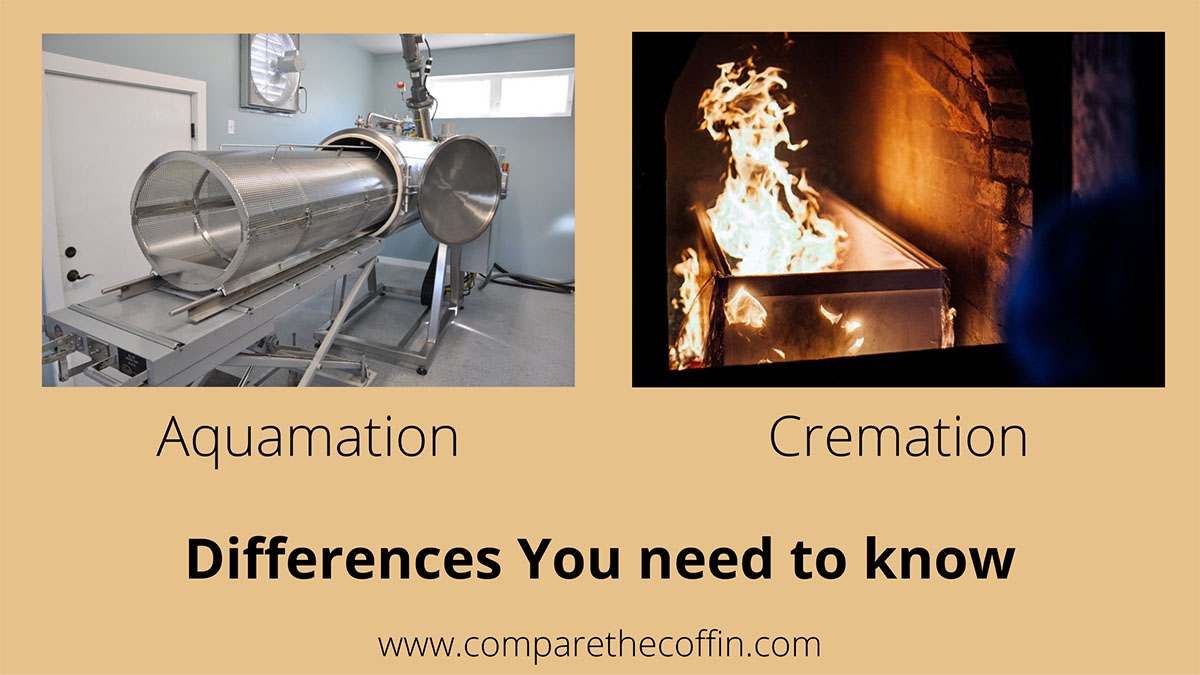Aquamation Vs. Cremation: Differences You Need To Know

Before we read the difference between Aquamation and Cremation, let’s also understand more about their definitions and the process. Here is a detailed explanation.
The Cremation’s process is based on the natural decay that a body undergoes when buried. With this procedure, the body decomposes in less than a day. During aquamation, the body is placed inside a watertight chamber. It has almost 100 gallons of water added along with some alkaline chemicals. The chamber is then slightly heated, which results in all of the body’s soft tissue being into the water, leaving the bone fragments which remain pulverized into a white or a sand-like material.
Whereas Cremation is a method of disposition of a dead body through burning. It also serves as a funeral or post-funeral rite and is an alternative to an intact dead body’s burial.
Now that we have some fair idea about these terms let’s find out the differences between the two you Need to Know!
1. Aquamation Is More Expensive Than Cremation
The aquamation process costs hundreds of thousands of dollars. There is a lot of equipment required, and hence the funeral houses charge enough to cover the cost of the equipment they use. Because of this particular reason, aquamation is often more expensive than the traditional process of Cremation.
2. Aquamation Is More Environment-Friendly Than Cremation
To explain why aquamation is more environmentally-friendly than Cremation, let’s first understand a little bit about the cremation process. Crematoriums generate high heat, and it can go upto 1400 and 2100 degrees Fahrenheit, i.e., break down the body’s tissues and decompose it. This process also releases a few harmful emissions into the environment. While on the other hand, Aquamation uses very little energy compared to the traditional Cremation, and there are no toxic gases released into the environment.
Suggested Reading : 7 Facts About Your Green Burial Options
3. Aquamation Ashes Look Slightly Different Than that of Cremation Ashes
Cremation remains often come out as gray and sandy. Once the aquamation process is completed, the family gets a white uniform powder. But with Aquamation, the family receives more remains than the cremation process.
4. Cremation Is Available In Most Areas But Aquamation May Not
One of the key differences between both procedures is its availability. You would need to check with your local representative to determine where the aquamation is available and where it is not.
5.Casket for Cremation But Nothing for Aquamation
Since aquamation does not require any casket, there is no need for you to buy it, unlike Cremation where it is required. So if you decide to go for an aquamation, then there is no casket required.
6.Aquamation Takes Longer than Cremation
The process of aquamation may last up to six to eight hours and extend to as long as 18 to 20 hours, depending on the amount of heat required. At the same time, Cremation takes place in five to six hours.
7.Cremation Has Been The most preferred option Than Aquamation.
Cremation is widely used in most countries, whereas aquamation is gradually gaining acceptance.
8. Larger Cremation Urns Needed When Choosing Aquamation Over Cremation
Families receive 20% to 30% more remains through aquamation than that of Cremation. Thus, you would need to buy bigger cremation urns if you opt for aquamation as a burial option. You should purchase an urn that would hold a significantly large volume of ashes.
Conclusion:
Many people do not yet consider aquamation because they believe Cremation and burial are the primary options. It depends on the family and the departed soul’s wish to choose an option that meets your expectations. You need to make an informed choice and choose the one that aligns with your goals.
